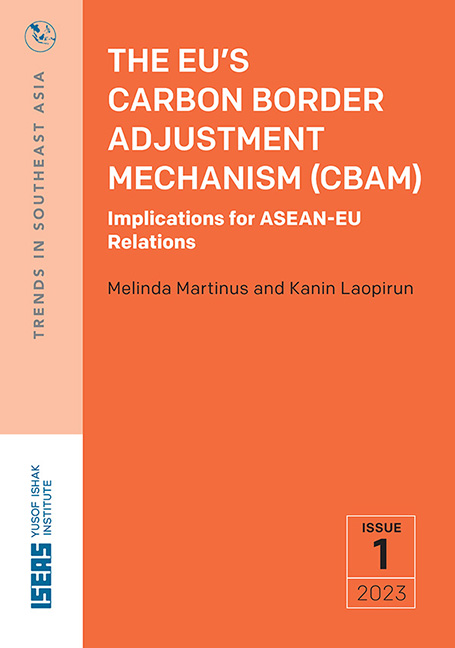The EU’s Carbon Border Adjustment Mechanism (CBAM): Implications for ASEAN-EU Relations: Executive Summary
Published online by Cambridge University Press: 09 January 2024
Summary
• There is a growing policy trend that in addressing climate change, various trade measures must be implemented to enhance the sustainable practices of global stakeholders.
• As a response to level up the playing field of global trade partners in enhancing sustainability, the EU recently introduced the European Union (EU) Carbon Border Adjustment Mechanism (CBAM), which will impose a carbon price on certain imports, namely, electricity, aluminium, cement, iron and steel, and fertilizer, to the EU.
• The EU CBAM may, however, cause trade disputes among World Trade Organization (WTO) members.
• EU and ASEAN trade relations are currently on an upswing trajectory, and there are therefore some risks involved in implementing the EU CBAM in the ASEAN region.
• At the same time, despite the perceived adverse effects, there is room for improvement in communicating EU CBAM implementation in ASEAN.
• The EU should introduce more calibrated approaches to implementing the EU CBAM in ASEAN, particularly considering the political and strategic risks, economic development and capacity, and climate ambitions of individual ASEAN countries.
- Type
- Chapter
- Information
- The EU's Carbon Border Adjustment Mechanism (CBAM)Implications for ASEAN-EU Relations, pp. vii - viiiPublisher: ISEAS–Yusof Ishak InstitutePrint publication year: 2023

